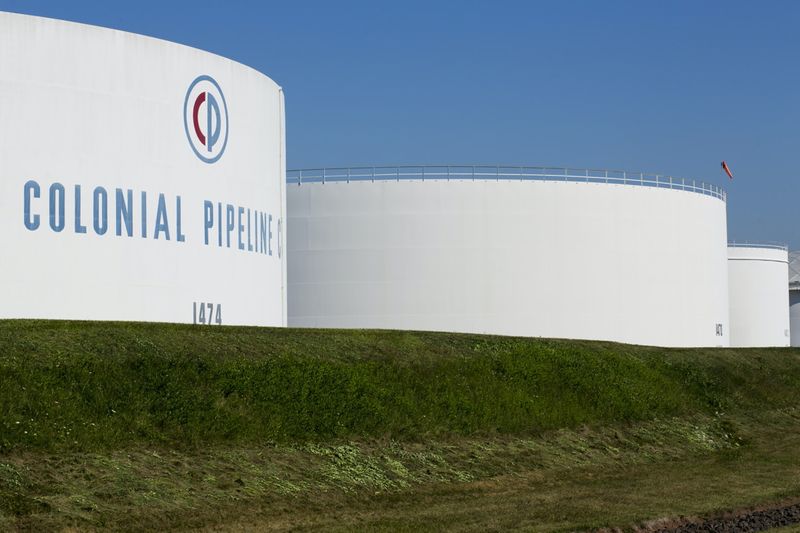By Peter Nurse
Investing.com -- Crude oil prices weakened Tuesday as fears of prolonged outage of the largest U.S. fuel pipeline system faded, although a degree of uncertainty still exists over when normalcy will return.
By 9:25 AM ET (1425 GMT), U.S. crude futures traded 1.6% lower at $63.88 a barrel, while the international benchmark Brent contract fell 1.6% to $67.25.
U.S. Gasoline RBOB Futures were down 1.3% at $2.1068 a gallon, retreating to roughly Friday’s pre-spike levels.
Colonial Pipeline said on Monday it was working on restarting its network, which transports more than 2.5 million barrels per day of gasoline, diesel and jet fuel, with "the goal of substantially restoring operational service by the end of the week."
That said, entering the fifth day of the crisis, the company has only managed to manually operate a small segment of the pipeline, and that only as a stopgap measure.
“Refined product markets do not seem overly concerned about the disruption to the Colonial pipeline, with prices settling only marginally higher yesterday,” said analysts at ING, in a note. “This is still likely to lead to some tightness in gasoline on the East Coast, with inventories in the region currently sitting below the 5-year average. We will likely see increased flows of seaborne cargoes into the East Coast in order to help with this tightness.”
There has already been some anecdotal evidence of this tightness, with fuel stations on the U.S. East Coast reporting that they’ve sold out of gasoline as supplies dwindle and individuals start to stock up supplies.
Oil prices have been on a tear for most of 2021, with both contracts up over 30% year to date, as most of the major oil consuming nations of the world reopen their economies after the Covid-19 pandemic.
The Organization of Petroleum Exporting Countries said in its monthly report, issued earlier Tuesday, that the level of global oil demand will rise by about 6 million barrels per day this year, to 96.5 million bpd.
The cartel kept its outlook for the year unchanged even with oil demand in India falling 7.2% in April, from a year ago, as the country suffers badly from a second wave of the pandemic. This was the largest drop in demand since August 2020, but so far the country has avoided a repetition of the precipitous oil demand collapse between March and April last year.
Later in the session, the American Petroleum Institute will report its weekly inventory levels of U.S. crude oil, gas and distillate stocks, with the industry body reporting last week a hefty draw of almost 7.7 million barrels of crude.
